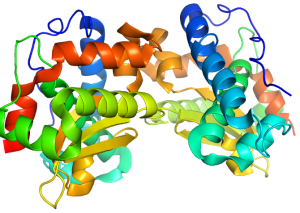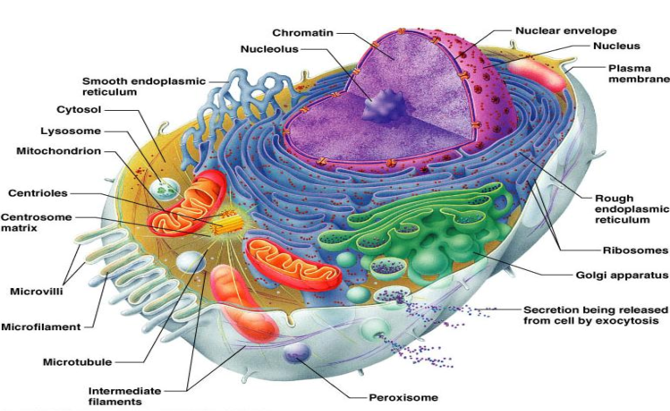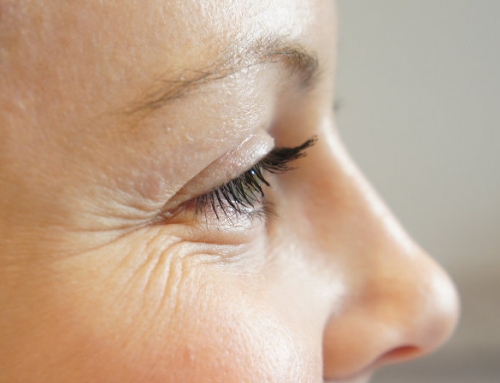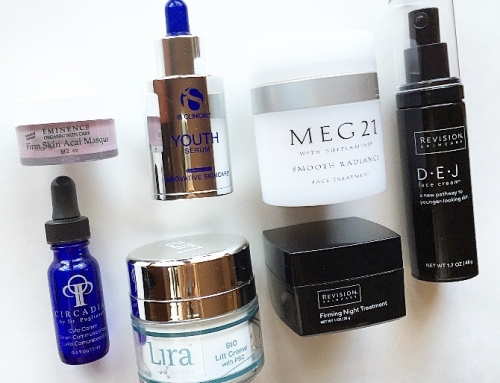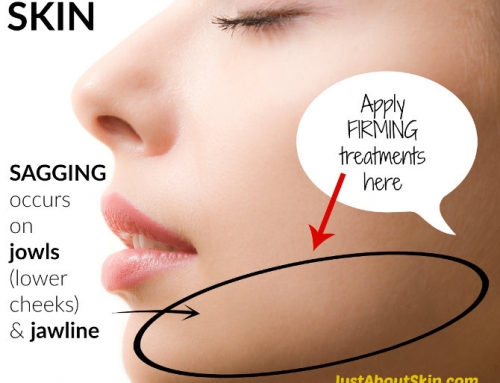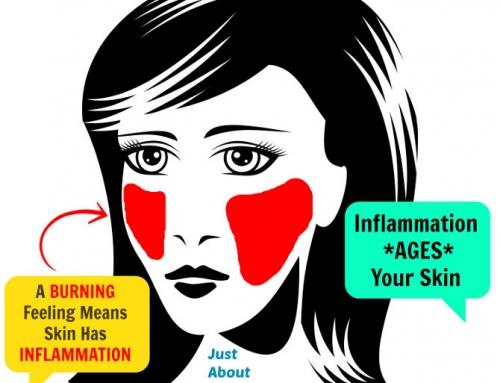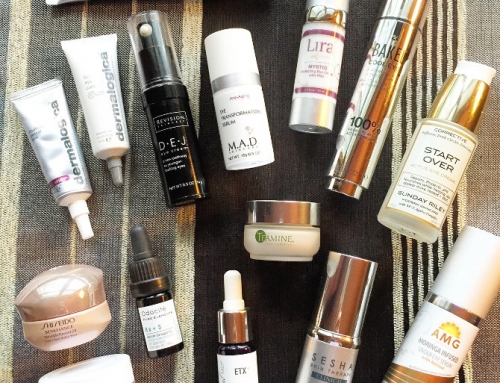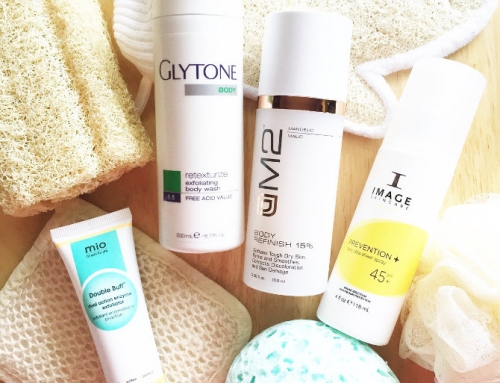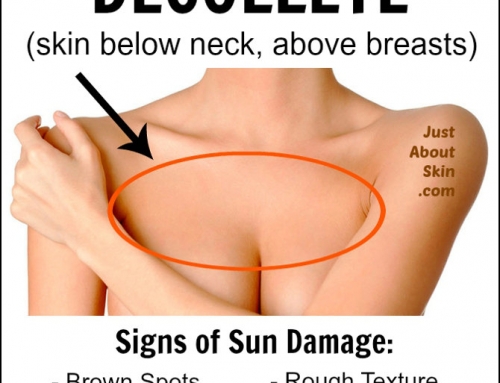To conclude this week’s discussion on Indirect Antioxidants, today’s post is about Antioxidant Enzymes. They’re very important for skin.
Note: This is an advanced discussion of antioxidants for those of you serious about anti-aging. It’s heavy on the science, but I’ve tried to make it as palatable as possible 🙂
Antioxidant Enzymes
Antioxidant enzymes are produced by the cell during times of oxidative stress. For example, when there are Reactive Oxygen Species attacking cells.
Notice how I said “antioxidant enzymes,” not “antioxidants.” They’re different.
[An enzyme is a protein that catalyzes a chemical reaction. An antioxidant is a chemical that inhibits the oxidation of another molecule.]
Antioxidant enzymes are enzymes that behave like antioxidants. They are called endogenous antioxidants since they are produced internally (endogenous means internal).
On the contrary, antioxidants are not enzymes (they do not activate chemical reactions). The body contains internal sources of antioxidants. External sources come from food and supplements.
There are 3 major antioxidant enzymes that you should know about:
- Superoxide Dismutase
- Catalase
- Glutathione Dismutase
In addition, you also need to know about Glutathione (different from Glutathione Dismutase). Glutathione is an antioxidant, and it is known as the master of all indirect antioxidants.
SUPEROXIDE DISMUTASE (SOD)
Superoxide Dismutase is an antioxidant enzyme that stops the Superoxide radical.
What is Superoxide?
Superoxide is one of the Reactive Oxygen Species (ROS).
It is the primary trigger of inflammation, formed by UV and enzyme reactions during normal metabolism.
Why is Superoxide Bad?
Superoxide attacks Cell Membranes, Mitochondria, and Enzymes.
It is quite reactive and long-lived.
- Can react with another Superoxide radical to form Hydrogen Peroxide
- Can react with an unsaturated fatty acid to form Lipid Peroxide
- Can react with Hydrogen Peroxide to form the Hydroxyl Radical (the worst type of radical)
How Superoxide Dismutase Works
Superoxide Dismutase (SOD) stops Superoxide by converting it into Oxygen and Hydrogen Peroxide.
There are 3 main types of SOD, which reside in different parts of the cell:
-
- SOD1 – Cytosolic (present in the cytosol of the cell), Nucleus
- SOD2 – Mitochondrial (in the mitochondria of the cell)
- SOD3 – Extracellular (outside the cell)
SOD is deactivated in sunlight. So skin care products with SOD should only be applied to skin at night.
CATALASE
Catalase is an antioxidant enzyme that stops the Hydrogen Peroxide radical.
What is Hydrogen Peroxide?
Hydrogen Peroxide is one of the Reactive Oxygen Species (ROS).
It is cytotoxic, which means it kills cells.
Why is Hydrogen Peroxide Bad?
Hydrogen Peroxide can diffuse rapidly into cells, and cross both the cell membrane and nuclear membrane. There it reacts with nuclear DNA and proteins, damaging both DNA and proteins.
Additionally, it can be converted easily to the Hydroxyl Radical (the worst one) in the presence of iron.
Like Superoxide, it is a long-lived radical.
How Catalase Works
Catalase gets rid of Hydrogen Peroxide by converting it into Oxygen and Water.
It is very effective at this, and removes the majority of Hydrogen Peroxide radicals.
GLUTATHIONE PEROXIDASE
Glutathione Peroxidase is an antioxidant enzyme that stops Hydrogen Peroxide.
How Glutathione Peroxidase Works
Glutathione Peroxidase stops Hydrogen Peroxide by converting it into Oxygen and Water.
GLUTATHIONE – THE MASTER ANTIOXIDANT
Glutathione is an indirect antioxidant that assists Glutathione Peroxidase and quenches Hydroxyl Radical.
Note: Their names are similar, but Glutathione is not the same as Glutathione Peroxidase.
What is Hydroxyl Radical?
Hydroxyl Radical is one of the Reactive Oxygen Species (ROS).
Of all the ROS, it is the most damaging because it mutates nuclear and mitochondrial DNA.
Why is Hydroxyl Radical Bad?
Hydroxyl radical attacks almost every compound in the body – DNA, enzymes, proteins, lipids, and carbohydrates.
It is extremely reactive. And also very short-lived. So short-lived that no Antioxidant Enzymes can stop Hydroxyl Radical. It acts too fast, before any enzymatic reaction can occur.
But Glutathione can react with Hydroxyl Radical to quench it. (So can Vitamin E, Vitamin C, and uric acid.)
What is Glutathione’s Role?
Glutathione is the body’s main detoxifying agent. It reacts with damaging chemicals, such as carcinogens, heavy metals, smoke, pesticides, and other toxins, to render them harmless.
As mentioned above, Glutathione can scavenge Hydroxyl Radical. It also quenches Singlet Oxygen (another ROS).
It also recycles Direct Antioxidants, such as Vitamin C and Vitamin E.
Thanks to these capabilities, Glutathione is called the ‘Master of the the Indirect Antioxidants.’
Glutathione is produced in almost all living cells. But with age, production of Glutathione declines. This is why you see Glutathione as a nutritional supplement and why it is sometimes added to skin care products.
Note: Glutathione is sometimes abbreviated GSH.
Related Articles:
Free Radicals and Reactive Oxygen Species
Cover Photo: Spices are a rich source of antioxidants.

